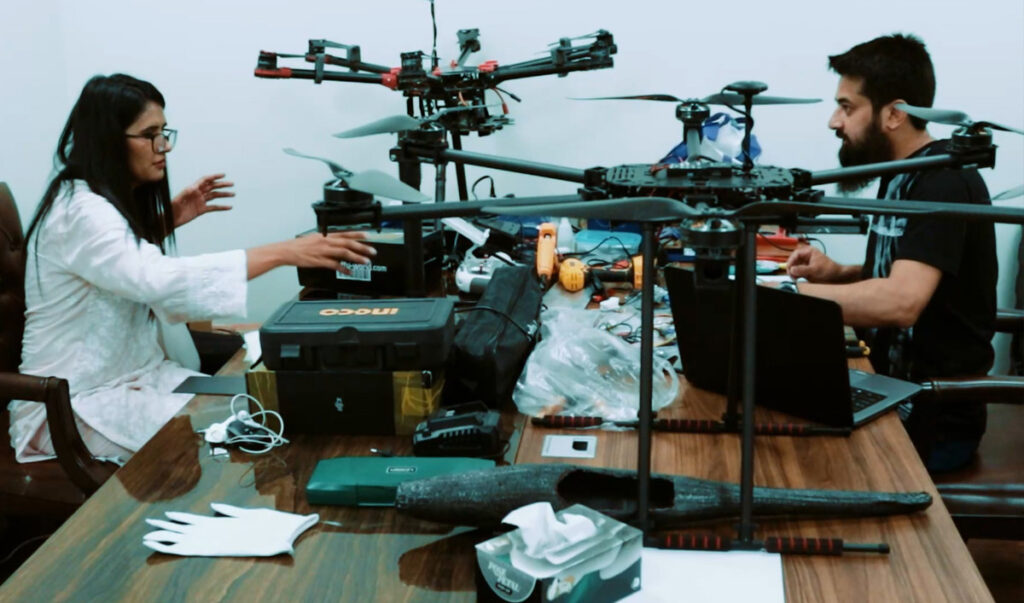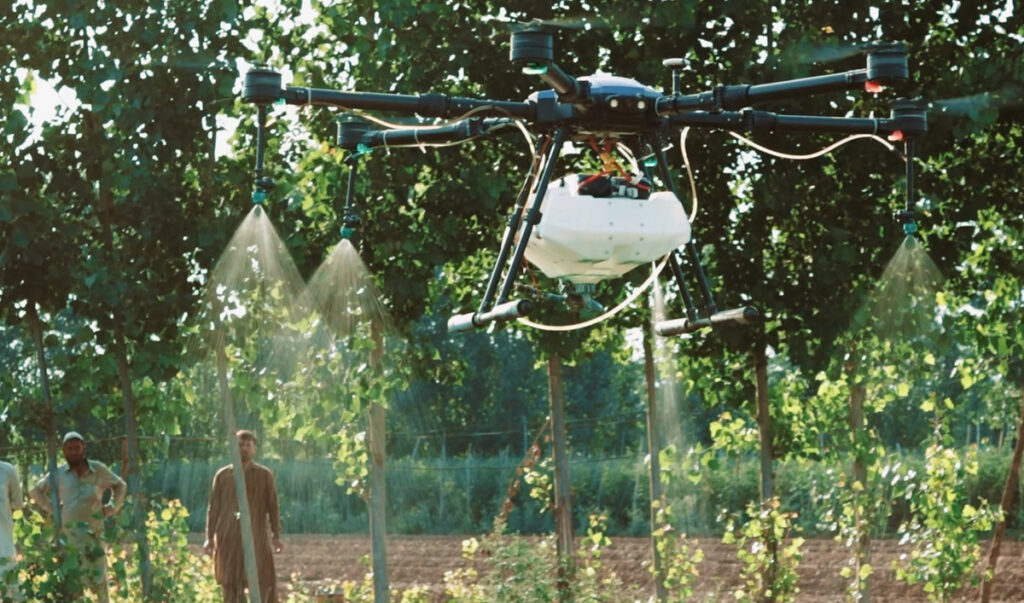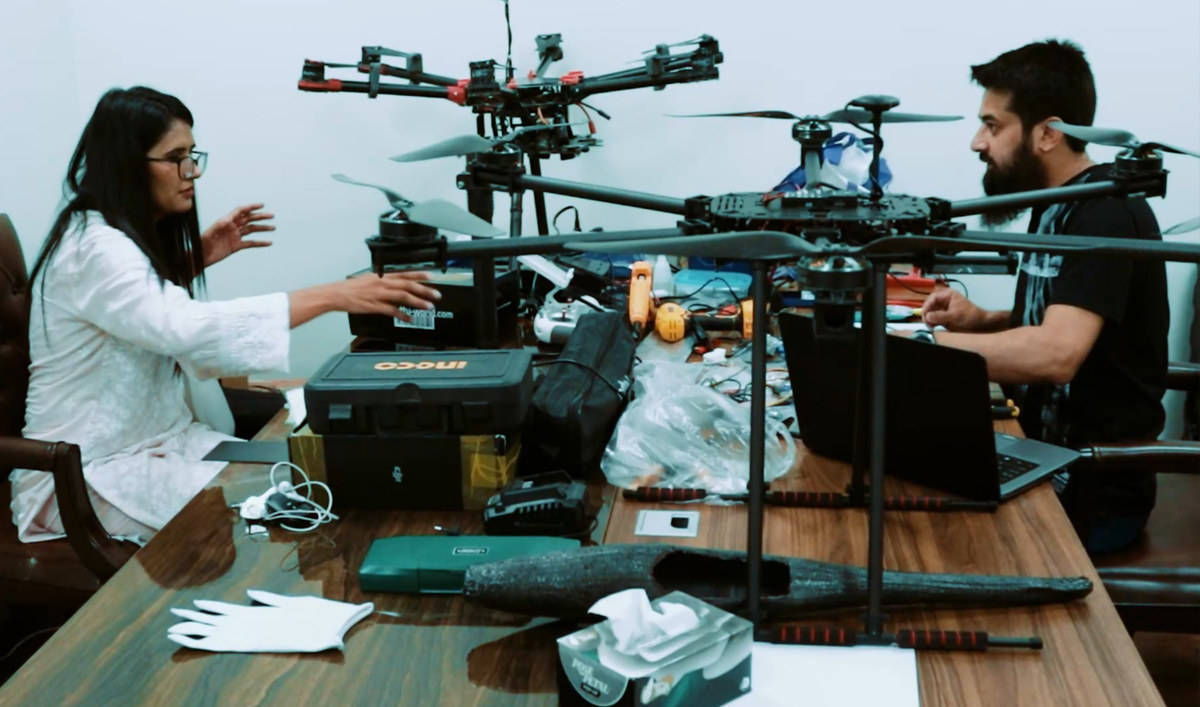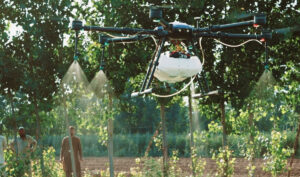Kalam is making drone technology more accessible for farmers in Pakistan. Recently we got covered by Arab News.
Check the article below and Video link.
Agricultural drones, also known as agri drones or agricultural unmanned aerial vehicles (UAVs), offer several benefits in modern farming practices. Here are some key advantages of using agri drones in agriculture:
Precision crop monitoring: Drones equipped with high-resolution cameras and sensors can capture aerial images of farmland. These images can provide valuable data on crop health, growth patterns, irrigation needs, and pest infestations. By monitoring crops from above, farmers can identify issues early on and take targeted actions, leading to more efficient resource allocation and higher yields.

Improved crop spraying: Agri drones can be equipped with spraying systems that enable precise and targeted application of fertilizers, pesticides, and herbicides. Compared to traditional ground-based spraying methods, drones can provide more even coverage, reduce chemical drift, and minimize soil compaction. This leads to reduced chemical usage, cost savings, and environmental benefits.
Efficient mapping and surveying: Drones can quickly and accurately map large agricultural areas, creating detailed topographic maps, elevation models, and 3D models of the terrain. This information helps farmers optimize field design, plan drainage systems, and assess soil health variations across their land. It enables better decision-making and resource management for improved productivity.
Time and labor savings: Drones can cover large areas of farmland in a short time, reducing the time and effort required for manual inspections or monitoring. Farmers can access real-time data without the need for physical presence in the field. This frees up valuable time and labor resources, allowing farmers to focus on other critical tasks or manage larger areas of land effectively.
Early detection of crop diseases and stress: The aerial imagery captured by drones can reveal subtle changes in crop health that may indicate the presence of diseases, nutrient deficiencies, or water stress. By detecting these issues early, farmers can intervene promptly, apply targeted treatments, and prevent the spread of diseases. This proactive approach can save crops and improve overall farm productivity.
Water resource management: Drones equipped with thermal or multispectral sensors can assess crop water stress levels by measuring plant temperature and reflectance. This data helps farmers optimize irrigation practices by identifying areas that require more or less water. By minimizing water usage and ensuring efficient irrigation, agri drones contribute to water conservation and sustainable farming practices.

Enhanced crop scouting: Traditional crop scouting involves physically walking through fields to identify crop issues or assess growth stages. Drones simplify this process by providing a bird’s-eye view and capturing high-resolution images or videos. Farmers can monitor larger areas more quickly, identify problem spots, and make data-driven decisions based on accurate and up-to-date information.
Increased safety: Drones can perform tasks that would otherwise be dangerous or time-consuming for humans. For example, they can inspect tall crops, livestock, or equipment, reducing the risk of accidents or injuries. Drones can also assess damage after natural disasters or monitor remote areas that are difficult to access, enhancing safety and minimizing potential hazards.
Overall, the use of agri drones in agriculture can improve farm management practices, optimize resource allocation, reduce environmental impact, and enhance productivity. As technology advances and costs decrease, drones are becoming increasingly accessible and valuable tools for modern farmers.









